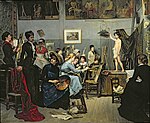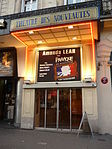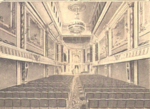Murder of Jean Jaurès

The murder of Jean Jaurès, French deputy for Tarn and Socialist politician, took place on Friday, July 31, 1914, at 9:40 pm, as he dined at the Café du Croissant on rue Montmartre in Paris's 2nd arrondissement, in the heart of the Republic of the Croissant, not far from the headquarters of his newspaper, L'Humanité. He was hit by two gunshots: one bullet pierced his skull and the other nestled in woodwork. The famous politician collapsed, mortally wounded. Committed three days before France's entry into World War I, this murder put an end to the desperate efforts Jaurès had made since the Sarajevo bombing to prevent a military explosion in Europe. It precipitated the rallying of the majority of the French left to the Sacred Union, including many socialists and trade unionists who had previously refused to support the war. The Sacred Union ceased to exist in 1919 when his assassin, Raoul Villain, was acquitted. The transfer of Jaurès's ashes to the Panthéon in 1924 underlined another political split within the Left, between communists and socialists.
Excerpt from the Wikipedia article Murder of Jean Jaurès (License: CC BY-SA 3.0, Authors, Images).Murder of Jean Jaurès
Rue du Croissant, Paris 2nd Arrondissement (Paris)
Geographical coordinates (GPS) Address Nearby Places Show on map
Geographical coordinates (GPS)
| Latitude | Longitude |
|---|---|
| N 48.869166666667 ° | E 2.3433333333333 ° |
Address
Le Bistrot Du Croissant
Rue du Croissant
75002 Paris, 2nd Arrondissement (Paris)
Ile-de-France, France
Open on Google Maps











